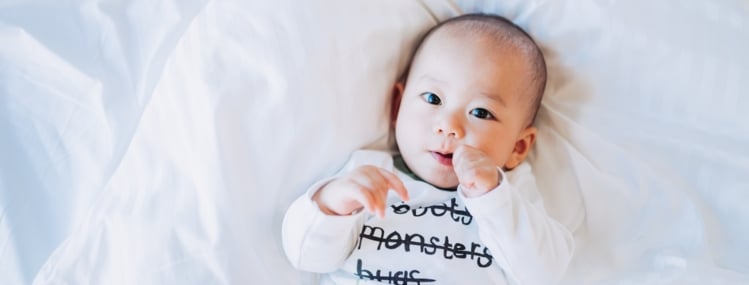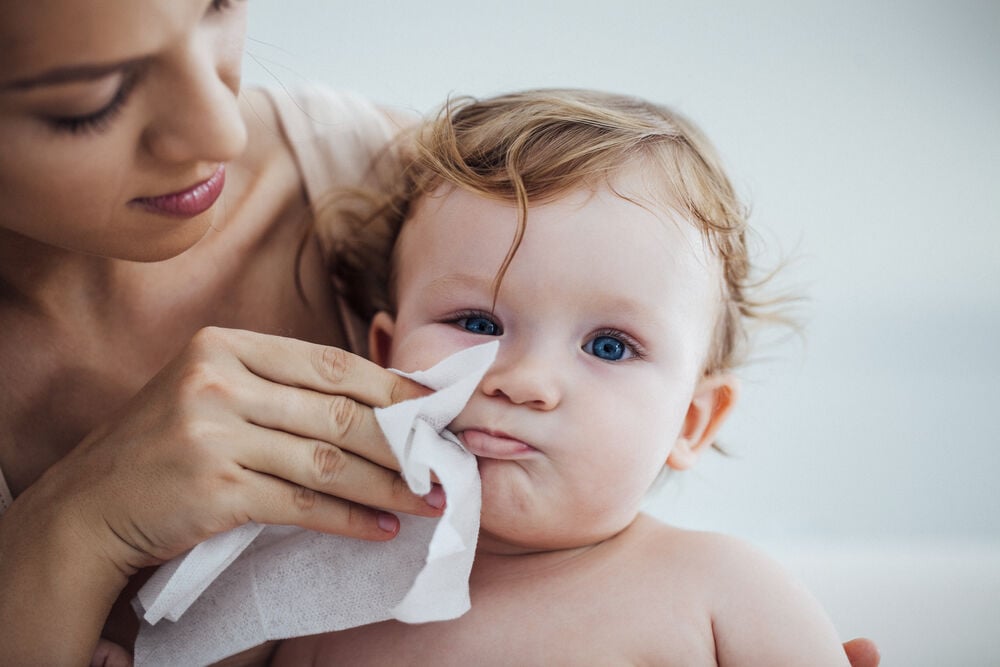-
Tracking cycle
-
Getting pregnant
-
Pregnancy
-
Help Center
-
Flo for Partners
-
Anonymous Mode
-
Flo app reviews
-
Flo Premium New
-
Secret Chats New
-
Symptom Checker New
-
Your cycle
-
Health 360°
-
Getting pregnant
-
Pregnancy
-
Being a mom
-
LGBTQ+
-
Quizzes
-
Ovulation calculator
-
hCG calculator
-
Pregnancy test calculator
-
Menstrual cycle calculator
-
Period calculator
-
Implantation calculator
-
Pregnancy weeks to months calculator
-
Pregnancy due date calculator
-
IVF and FET due date calculator
-
Due date calculator by ultrasound
-
Medical Affairs
-
Science & Research
-
Pass It On Project New
-
Privacy Portal
-
Press Center
-
Flo Accuracy
-
Careers
-
Contact Us
Teething Rash: Working Tips to Help Your Infant


Every piece of content at Flo Health adheres to the highest editorial standards for language, style, and medical accuracy. To learn what we do to deliver the best health and lifestyle insights to you, check out our content review principles.
Can teething cause a rash?
Home remedies for teething rash can help, but most important is keeping your baby's chin, cheeks, and neck dry from the excess drool. Be very careful about how you treat teething rash — your baby may accidentally ingest topical barriers and creams.
Many home remedies are helpful to reduce the appearance of the rash, although if your baby is very uncomfortable, always consult your doctor.
Teething is a stressful time for both moms and babies. New parents worry about their fussy baby, and the effects of teething leave both mothers and babies exhausted. Side effects from teething can mimic a cold or reactions from the six- and nine-month vaccines.
Babies are unfamiliar with the pain of teething and want relief. A mild rash from excess drool is one of the most common side effects of teething, and while it's a little unpleasant, simple treatment can reduce the inflammation and help protect your baby's sensitive skin.
Teething causes your baby to drool more, and this may chap their skin, producing a red, scaly rash. The cheeks and chin are the most common areas for a rash to form, although some babies, especially those just learning to sit up and those with little fat rolls on their neck, may have rashes in the crevices of their neck folds, too.
The teething process itself doesn't cause a rash, however, and "drool rash" may be present without a baby cutting teeth. Babies who use a pacifier may be especially susceptible to a rash around the mouth.
When the wet skin comes in contact with something rough, like fabric, a toy, or even the baby's skin, a rash can develop. Teething rashes are not contagious and usually remain localized around the mouth, cheeks, and chin.
Baby teething rash symptoms
Redness and dry skin are the most common symptoms of drool rash, although small bumps may accompany the rashes. These rashes are generally mild, producing flaky skin and sometimes small breaks in the skin.
It's especially important to keep your baby's skin thoroughly dry, as an inflamed rash, especially one with open skin or cracks, can develop an infection if bacteria gets in. Drool has digestive enzymes in it as well that can cause infection or inflame the rash further.
Rashes from teething may mimic other, more serious symptoms. A drool rash looks like red, chapped skin, sometimes shiny, although with no pustules or acne pimples. Other rashes that may look like a rash from teething but are more severe include petechiae which, when accompanied by a fever, is serious and needs medical attention right away.
Petechiae are burst blood vessels and look like flat red dots that don't turn white when you push down on them. Drool rashes, on the other hand, will turn white when pressed.
Measles, chicken pox, and foot-and-mouth disease also present in a similar manner to drool rash, although they're usually accompanied by a higher fever, watery eyes, and visible signs of illness. Still, if you're concerned whether your baby's rash is from teething or is something more serious, always consult your pediatrician.
Rash from teething treatment
Treating drool rash begins with making sure to keep your baby's skin dry. Sometimes, the rash will go away on its own or with a thin application of petroleum jelly. Other times, however, the rash needs treatment for an infection that forms or to help heal cracks in the skin.
Aloe vera mixed with petroleum jelly may help reduce some of the redness and inflammation from drool rash. Some parents may choose to use coconut oil or cocoa butter to help soothe rashes from teething. However, coconut may be an allergen, so consult with your baby's pediatrician before administering that or aloe to your baby's rash.
While many rashes go away on their own, some may become severe or infected. Consult your child's pediatrician if the rash becomes severely chapped, has broken skin, or doesn't seem to go away with these home treatments.
Your baby may have something more serious than a mild drool rash, and the doctor can prescribe ointments or other topical treatments to help heal persistent and painful rashes.
Preventing a rash from teething

Preventing drool rash mainly involves keeping your baby's skin as dry as possible. Consistently wipe your baby's skin with a clean, dry cloth, making sure to dab the drool rather than rub. Be sure to avoid paper towels or napkins if possible as these can cause further irritation. You may also choose to keep a bib on your baby, to help keep the drool off their sensitive neck. Take care to use fabric bibs that aren't rough instead of plastic bibs.
A thin layer of petroleum jelly acts as a barrier between baby's drool and their skin and may prevent a rash from forming entirely. Dry your baby's skin carefully and apply gently using your fingertips or a cotton ball. During bath time, use a mild soap to gently wash your baby's rash to prevent infection, and don't forget all the folds of their neck.
Make sure to change your baby's wet clothing often, including the bib, and use non-allergenic detergent to prevent causing more of a rash or reaction. If you aren't already, you may wish to wash your own clothing ad the rest of the family's in the same detergent, to avoid any allergic reaction when the baby is being held.
Teething can be a worrisome time for both babies and parents, especially new parents who aren't getting much sleep and mothers still settling down from pregnancy and postpartum hormone swings. Try to remain calm and give your baby plenty of cold things to chew on, make sure that their skin is dry, and give your baby lots of cuddles to help soothe them. Mild exercises, such as those recommended after Cesarean delivery, may help reduce your own stress from helping a teething baby. As always, when in doubt about the treatment or severity of a teething rash, consult your baby's doctor.
Take a quiz
Find out what you can do with our Health Assistant


Hey, I'm Anique
I started using Flo app to track my period and ovulation because we wanted to have a baby.


The Flo app helped me learn about my body and spot ovulation signs during our conception journey.


I vividly
remember the day
that we switched
Flo into
Pregnancy Mode — it was
such a special
moment.
Real stories, real results
Learn how the Flo app became an amazing cheerleader for us on our conception journey.




